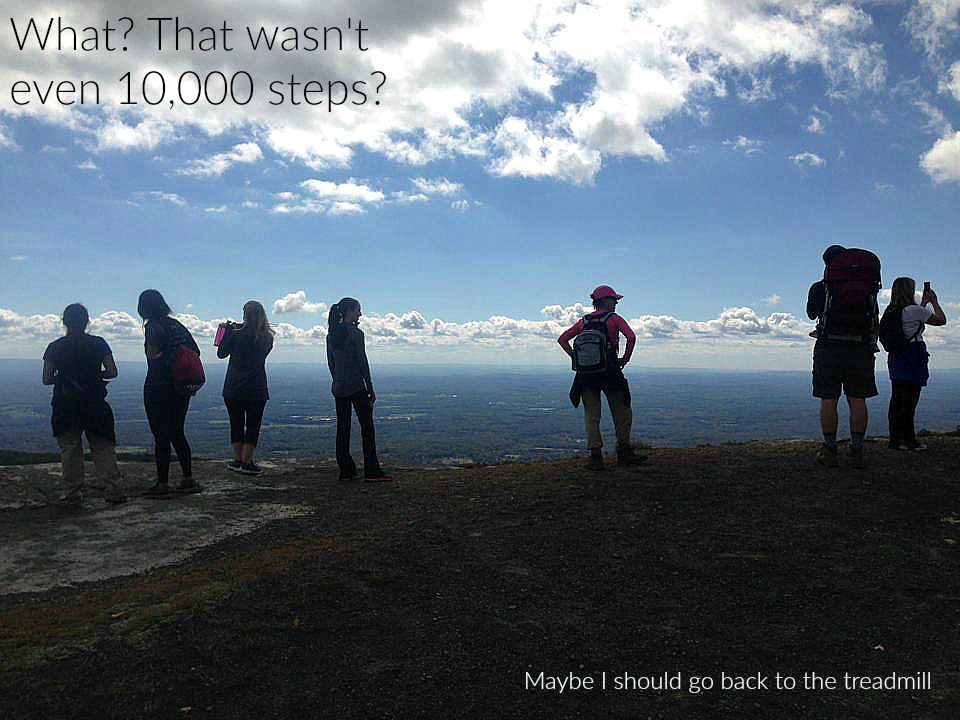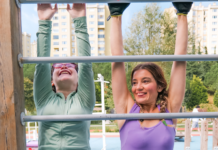Do you march in place until your tracker reaches 10,000 steps? Do you plan your workouts around how to get the most steps? Do you get really upset when you exercise but forget to put on your tracker? You may need an SOI – Step Obsession Intervention!
I’ve seen a lot of trends come and go but the fitness wearable/step tracking trend has been nothing short of fascinating. While the intention of these trackers is to motivate people to be more active and recognize when they are being sedentary for too long, some people have taken the 10,000 step goal to the extreme.

“I can’t believe it! I did that whole workout and I wasn’t wearing my tracker! What a waste.”
“I’m not even going to swim anymore. It doesn’t give me any steps! Why bother?”
“I did that whole hike and it wasn’t even 10,000 steps?”
“I didn’t even realize how tired I was until my tracker showed how restless my sleep is”.
Don’t get me wrong, fitness trackers can be very motivating and beneficial. I have many clients who say their devices push them to do more activity, and they have become a real eye opener of how little exercise they get on a typical day. Many have told me they are highly encouraged by the email reminders and online competitions. But, I have heard from many others how guilty they feel or that they change from workouts they love, but where steps aren’t easily tracked, to exercise types that will yield more steps (think running vs. swimming) or, they choose less challenging workouts just to get more steps (such as my steep hiking vs. flat treadmill example in the photograph above). A challenging uphill 2 hour hike may yield fewer steps than a 1 hour flat walk, but tracking steps alone doesn’t take into account intensity, strength and endurance building, or calorie and fat burning. It’s important to take those steps in stride! Take a look at the checklist below to see if you may need an SOI!
Signs you and your tracker have a healthy relationship. You…
|
Signs you may need an SOI. You…
|
So? Do you need a Step Obsession Intervention? Consider the following.
Rediscover mindful fitness: Take a week where you choose your activity based on your personal goals. Want to have fun with fitness? Choose your favorite form of exercise and enjoy it! Need to fit in short spurts? Do 10 minute mini workouts several times a day. Love your bike? Use it! Training for an event? Stick to your training program, including the cross training or recovery days that may yield fewer steps.
Examine what benefits you are getting out of using the tracker and what negatives you are experiencing. Once you’ve done this, decide how you want to use the tracker going forward. Feeling overwhelmed by competitions? Drop the competitions and just focus on yourself. Frustrated you aren’t getting “credit” for your non-walking workouts? Consider using the tracker as a way to encourage more “activities of daily living” but not to track your rowing, swimming, biking workouts. If you are a die-hard tracker and the thought of not-tracking has you panicked, consider if there are any negatives to your obsession, or, perhaps, your current process is just right for you.
I’d love to hear your fitness tracker experiences. Please share!

























